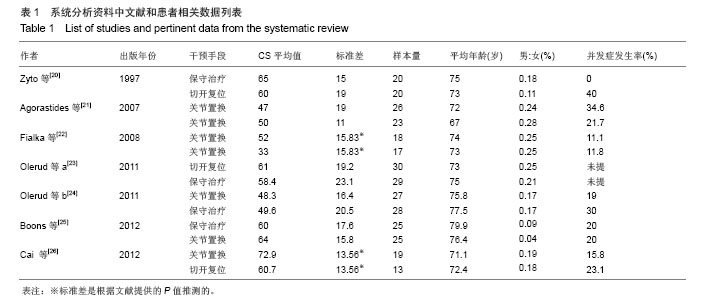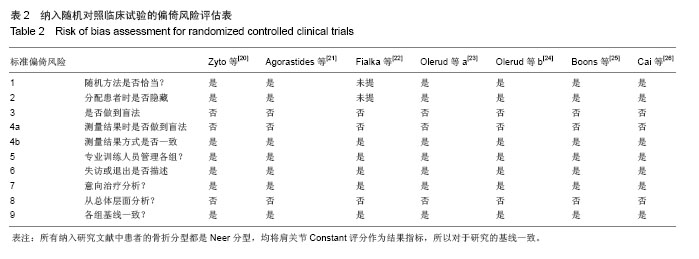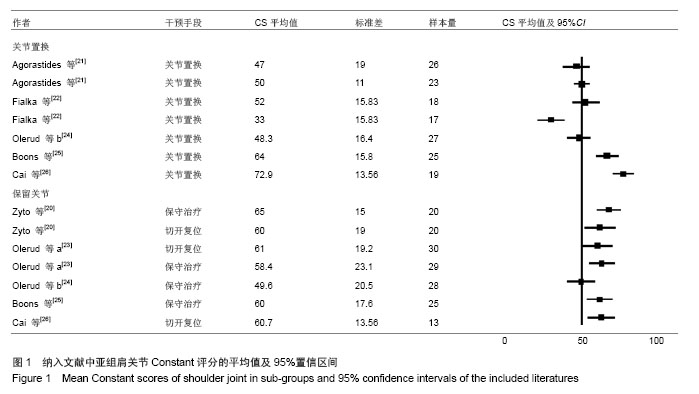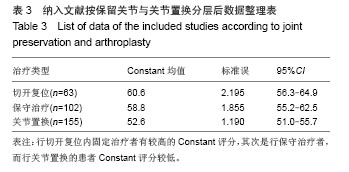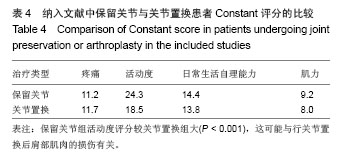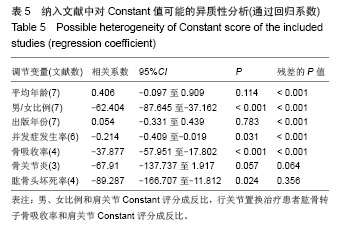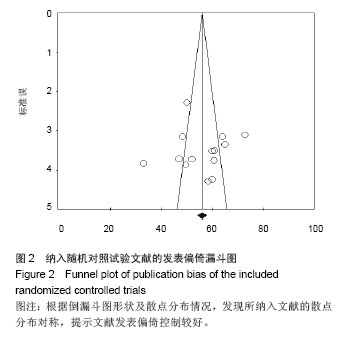| [1]Court-Brown CM, Caesar B. Epidemiology of adult fractures:A review. Injury. 2006;37:691-697.
[2]Südkamp N, Bayer J, Hepp P, et al. Open reduction and internal fixation of proximal humeral fractures with use of the locking proximal humerus plate. Results of a prospective, multicenter, observational study. J Bone Joint Surg Am. 2009; 91:1320-1328.
[3]Thanasas C, Kontakis G, Angoules A, et al. Treat-ment of proximal humerus fractures with locking plates: a systematic review. J Shoulder Elbow Surg. 2009;18:837-844.
[4]Barrett JA, Baron JA, Karagas MR, et al. Fracture risk in the U.S. Medicare population. J Clin Epidemiol. 1999;52:243- 249.
[5]Calvo E, Morcillo D, Foruria AM, et al. Nondisplaced proximal humeral fractures: high incidence among outpatient-treated osteoporotic fractures and severe impact on upper extremity function and patient subjective health perception. J Shoulder Elbow Surg. 2011;20(5):795-801.
[6]Guy P, Slobogean GP, McCormack RG, et al. Treatment preferences for displaced three-and four-part proximal humerus fractures. J Orthop Rauma. 2010;24(4):250.
[7]Court-Brown CM, Garg A, McQueen MM. The epidemiology of proximal humeral fractures. Acta Orthop Scand. 2001;72(4): 365-371.
[8]Gaebler C, McQueen MM, Court-Brown CM. Minimally displaced proximal humeral fractures: epidemiology and outcome in 507 cases. Acta Orthop Scand. 2003;74:580- 585.
[9]Handoll HH,Gibson JN,Madhok R. Interventions for treating proximal humeral Fractures in adults. Cochrane Database Syst Rev. 2010; 4 :CD000434.
[10]Misra A,Kapur R,Maffulli N. Complex proximal humeral fractures in adults-a systematic review of management. Injury. 2001; 32(5):363-372.
[11]Kontakis G,Koutras C,Tosounidis T,et al. Early management of proximal humeral fractures with heimiarthroplasty: a systematic review. Bone Joint Surg Br. 2008;90:1407-1413.
[12]Neer CSII. Displaced proximal humeral fractures: I. Classification and evalua-tion. J Bone Joint Surg Am. 1970; 52:1077-1089.
[13]Kontakis G, Koutras C, Tosounidis T, et al. Early management of proximal humeral fractures with hemiarthroplasty: a systematic review. J Bone Joint Surg Br. 2008; 90(11): 1407-1413.
[14]Fjalestad T, Strømsøe K,Blücher J. Fractures in the proximal humerus:functional outcome and evaluation of 70 patients treated in hospital. Arch Orthop Trauma Surg. 2005;(5): 310-316.
[15]Hanson B, Neidenbach P, de Boer P, et al. Functional outcomes after nonoperative management of fractures of the proximal humerus. J Shoulder Elbow Surg. 2009;18(4): 612-621.
[16]Constant CR, Murley AH. A clinical method of functional assessment of the shoulder. Clin Orthop Relat Res. 1987; 214:160-164.
[17]Majed A, Macleod I, Bull AM, et al. Proximal humeral fracture classification systems revisited. J Shoulder Elbow Surg. 2011; 20(7):1125-1132.
[18]Jadad AR, Moore RA, Carroll D, et al. Assessing the quality of reports of randomized clinical trials: is blinding necessary? Control Clin Trials.1996;17(1):1-12.
[19]Egger M, Davey SG, Schneider M. Bias in meta-analysis detected by a simple, graphical test. BMJ. 1997,315(7109): 629-634.
[20]Zyto K, Ahrengart L, Sperber A, et al. Treatment of displaced proximal humeral fractures in elderly patients. J Bone Joint Surg Br. 1997;79(3):412-417.
[21]Agorastides I, Sinopidis C, EI Meligy M, et al. Early versus late mobilization after hemiarthroplasty for proximal humeral fractures. J Shoulder Elbow Surg. 2007;16(3 Suppl.):S33–38.
[22]Fialka C, Stampfl P, Arbes S, et al. Primary hemiarthroplasty in four-part fractures of the proximal humerus: randomized trial of two different implant systems. J Shoulder Elbow Surg. 2008;17(2):210–215.
[23]Olerud P, Ahrengart L, Ponzer S, et al. Internal fixation versus nonoperative treatment of displaced 3-part proximal humeral fractures in elderly patients: a randomized controlled trial. J Shoulder Elbow Surg. 2011;20(5):747-755.
[24]Olerud P,Ahrengart L,Ponzer S,et al. Hemiarthroplasty versus nonoperative treatment of displaced4-part proximal humeral fractures in elderly patients: a randomized controlled trial. J Shoulder Elbow Surg. 2011;20:1025-1033.
[25]Boons HW, Goosen JH, van Grinsven S, et al. Hemiarthroplasty for humeral four-part fractures for patients 65 years and older: a randomized controlled trial. Clin Orthop Relat Res. 2012;470(12):3483-3491.
[26]Cai M, Tao K, Yang C, et al.Internal fixation versus shoulder hemiarthroplasty for displaced 4-part proximal humeral fractures in elderly patients. Trauma. 2012; 35(9):e1340- 1346.
[27]Baker P, Nanda R, Goodchild L, et al. A comparison of the Constant and Oxford shoulder scores in patients with conservatively treated proximal humeral fractures. J Shoulder Elbow Surg. 2008;17(1):37-41.
[28]Thalhammer G, Platzer P, Oberleitner G, et al. Angular stable fixation of proximal humeral fractures. Trauma. 2009;66: 204-210.
[29]Misra A, Kapur R, Maffulli N. Complex proximal humeral fractures in adults-a systematic review of management. Injury. 2001;32(5):363-372.
[30]Levy J, Frankle M, Mighell M, et al. The use of the reverse shoulder pros-thesis for the treatment of failed hemiarthroplasty for proximal humeral fracture.J Bone Joint Surg Am. 2007;89(2):292-300.
[31]冯彦华,王诗波.肱骨近端3,4部分骨折手术与非手术治疗疗效比较的Meta分析[J].中国矫形外科杂志,2012,20(14):1260-1264.
[32]Li Y, Zhao L, Zhu L, et al. Internal Fixation Versus Nonoperative Treatment for Displaced 3-part or 4-part Proximal Humeral Fractures in Elderly Patients:A Meta-Analysis of Randomized Controlled Trials. PLoS One. 2013;8(9):e75464.
[33]Kelsey JL, Browner WS, Seeley DG, et al. Risk factors for fractures of the distal forearm and proximal humerus, the study of osteoporotic fractures research group. Am J Epidemiol. 1992;135:477-489.
[34]Bell JE, Leung BC, Spratt KF, et al.Trends and variation in incidence, surgical treatment, and repeat surgery of proximal humeral fractures in the elderly. J Bone Joint Surg Am. 2011; 93(2):121-131.
[35]Court-Brown CM, Garg A, McQueen MM. The epidemiology of proximal humeral fractures. Acta Orthop Scand. 2001; 72(4):365-371.
[36]Kontakis G, Koutras C, Tosounidis T, et al. Early management of proximal humeral fractures with hemiarthroplasty: a systematic review. J Bone Joint Surg Br. 2008; 90(11): 1407-1413.
[37]Baker P, Nanda R, Goodchild L, et al. A comparison of the Constant and Oxford shoulder scores in patients with conservatively treated proximal humeral fractures. J Shoulder Elbow Surg. 2008;17(1):37-41.
[38]Neer CS 2nd. Four-segment classification of proximal humeral fractures: purpose and reliable use. J Shoulder Elbow Surg. 2002;11(4):389-400. |
